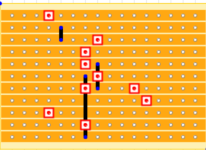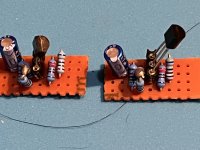Crash102
Well-known member
I have a questions about the Vero layouts. I understand what links are. And the how the components go. But for a few weeks I've been wondering what the heck the red squares mean. however, i think I've figured it out and want to double check. The image below says 3 links, 10 cuts. I put two and two together and think that "cuts' refer to the red squares. Is a cut simply removing the copper from that square so as to sequester off parts of the board?




